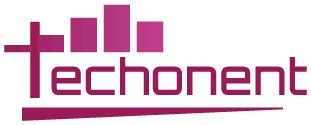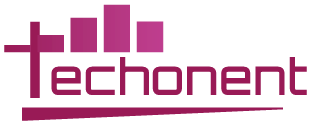
Google Classroom has become one of the most critical interventions that boost virtual lessons learning in a world of constantly progressing educational systems. Following its adoption by many educators and learners, there is a need for developing knowledge on how to optimally utilize Google Classroom 6x. Explaining how to use Google Classroom to increase participation, to address students’ needs and learning preferences, to facilitate classroom community, as well as to assess students, it also incorporates the most popular search terms from virtual learning and online education categories.
Introduction to Google Classroom 6x
Unlike many other LMS, Google Classroom is more about completing the entire process of creating assignment slips, sharing the assignments with the students and then, grading the assignments. Due to its simple That is because through its user interface, the class will be well managed for teachers, and the students will also feel that there is proper class management from a teacher’s perspective. As latest research pointed out the need for improving online learning solutions is growing at a constant pace, any educator interested in creating an engaging Google Classroom will find value in the present guide.
Why Enhance Virtual Learning?
It’s high time like never before enhancing of virtual learning can’t be an option. As much as education shifted online some of the challenges that continued to persist include; lack of motivation, engagement, and social interaction. When used properly the functions of Google Classroom can contribute to giving the students engaging, fun and customized lessons which they are eager to learn.
Google Classroom 6x Features Overview
In addition, the program has a wide variety of features that are meant to ease the learning process in Google Classroom. Knowledge about these tools can greatly improve teacher and learner practice.
A. User-Friendly Interface
From the interface of Google Classroom, you do not need a professional trainer to guide you in accessing materials or places since it’s well designed and easy to locate every feature a teacher or a student requires in their day to day learning. This ease of use is extremely important in order to encourage the learner’s participation and to allow them spend most of their time on the content rather than handling technology challenges.
B. Assignment Management Tools
Teachers: They can post assignments easily together with the due dates of the said assignments, reply to posts and track the submitted tasks coherently. The features of attaching files, links, and multimedia make assignments better and more interesting.
C. Communication Channels
Google Classroom has fabulous communication features, announcements and comments to facilitate communication between students and teachers. This creates a positive learning climate because students are easily encouraged to enquire and take part.
D. Integration with Google Workspace
Google Classroom has close collaboration with other Google Workspace apps such as Google Docs, Google Sheets, and Google Slides . It enable group contributions or project where students get to contribute in a project in the same time thereby increasing the effectiveness of the learning.
E. Accessibility Features
Google Classroom is quite an accessible program that has tools such as a screen reader and voice typing. This helps student with disabilities to equally enjoy the learning process like other students without disabilities.
Enhancing Engagement
Students’ participation is the key to learning, and Google Classroom 6x is filled with ways to reach it.
A. Interactive Assignments and Quizzes
Adding some forms of media, like videos, images, or interactive quizzes, into assignments increases student engagement greatly. Google Forms allows teachers to develop quizzes that give learners immediate feedback and changes their perception instantly.
B. Group Projects and Collaboration
Multilateral interactions cannot be excluded in today’s educational management environment. Google docs and Slides as examples enable student collaboration in projects, sharing and feedback between peers or groups easily. Not only that, but this also improves their comprehension of the content, which is to occur in a group and is a crucial factor in teaming.
C. Gamification Elements
It is important to know that introducing gamification into the learning process can be motivating for students, to a large extent. Amusements such as badges, rewards as well as leader boards make learning a sort of competition hence makes learning more fun.
Supporting Diverse Learning Styles
Students who work at school also have individual learning styles. Google Classroom’s flexibility gives the educators the opportunity to align with these differences.
A. Personalized Learning Paths
With use of differentiated assignment and choice boards, the teachers can provide learning experiences that are unique depending on skills and preferences. This kind of approach assists to guarantee students do not have one common issue in a virtual environment.
B. Accommodations for Students with Disabilities
Google Classroom 6x has many features like screen reader and text to speech to make learning possible for everyone. With the help of such tools, the educators can ensure all students equal chances for success on their classes.
Building Community and Connection
Community is a must have for students and even more so in such a format as the online school. Google Classroom provides this in the following ways.
A. Fostering Teacher-Student Relationships
Consultations and negative reinforcements do not contribute to strengthening bonds between people. The use of Google Classroom makes it possible for educators to respond to students’ questions in the most appropriate time so that the students feel valued.
B. Peer Interactions
Use of discussion boards and forums in Google Classroom requires students to communicate with their fellow students, exchange information and work on assignments. This fosters a sense of community that is missing and tends to isolate most learners undertaking online courses.
Assessing and Tracking Progress
A plan for measuring student accomplishment of outcomes and course objectives is necessary for assessment. Google Classroom provides different features in order to assist educators with the tracking of the progress successfully.
A. Variety of Assessment Tools
Descriptive assessments such as quizzes right through to formative ones, Google Classroom makes it possible for educators to adopt various approaches when evaluating their students’ work. Self-evaluations and self-prompts give even more independence to students on the path of studying.
B. Analytics and Reporting Features
Educators can also integrate analytics in the system, so that to monitor the learners’ activity, completion rates on the tasks, and their performance, in general. This data is then used to make an understanding of what areas or aspects have not been covered in class ornsthat have not been fully comprehended by students and what further instruction needs to be provided.
Best Practices for Educators
Establishing clear guidelines for participation, assignments, and communication can help students feel more secure in a virtual environment. Transparency fosters trust and encourages accountability.
A. Setting Clear Expectations and Guidelines
Clarity of rules, both general and specific, in terms of expected student involvement and expectations of in out of classroom assignments can allay fears people may have when learning in a virtual setting. Both ends of the relationship will be eager to get bad news out in the open because that means that they can be held to some degree of account.
B. Continuous Professional Development
Professionals in the educational domain need to understand new features and strategies of teaching. Participation of teachers in professional development helps them to make professional developments and learn new strategies of improving the learning process.
C. Utilizing Community Resources
Engaging the community and post question and idea’s that one can be able to get from other educators. An exchange of information and best practices creates not only more ideas but also results in enhanced virtual learning.
Challenges and Solutions
As has been highlighted there are many benefits of using Google Classroom in the virtual learning environment, however, there are still barriers to teaching and learning.
A. Common Challenges in Virtual Learning
It would be pertinent here to let you know that some students may be able to find access to the technologies being used in the class or have the motivation to do so in virtual setting. They can all in total affect the experience, effectiveness and participation of learners in the classroom environment.
B. Strategies to Overcome Challenges
These challenges that students face not only can be minimized by educators but through the support of technology and peers, educators can offer flexible due dates, technical support, and a supportive community. Daily contact with students can also create interest and update them.
Final Thoughts
All the more, Google Classroom 6x is a valuable tool that can improve the delivery of teaching when delivered online. In this way, teachers can produce more captivating, accessible, and productive learning spaces with the help of activating the platform’s functions. In the learning advancement of online education system, acceptance of Gen Classroom will be vital in enhancing the learning process.

